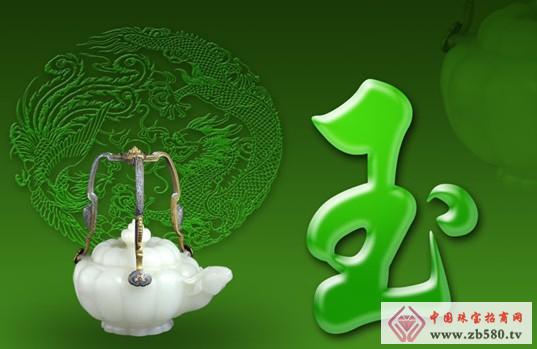Jade Culture and Buddhism
There are many definitions of culture, and it is said that there are more than 500 kinds. According to Mr. Xu Jialu, culture is all the material, system and spirit created by mankind. We believe that this definition contains several points: (1) Everything that nature gives to human beings is not culture, such as mountains and rivers; (2) even if human beings created during the obscurity period, it is also culture; (3) non-human creation is not culture. Such as the paintings painted by monkeys, the ant hills piled up by ants, the nests made by bees; (4) culture is intentionally created by human beings, and the things formed by unconsciousness are not cultures. Jade as an important material and cultural relic, not only has a wide distribution in the land of China, but also plays different roles in various historical periods, and plays an important role in all aspects of social production and social life, thus in the Chinese civilization. The history has formed a long-lasting jade culture tradition. Therefore, we can say that jade culture is the jade, jade system and jade culture connotation created by mankind. Buddhist culture is also a unique culture of Chinese culture. It has been a long time since Buddhism was introduced to China and other countries and regions of the Han culture. Although many people do not believe in Buddhism, Buddhism culture has existed and spread widely in the land of China for a long time. People's daily life is closely related to it. A large number of classics of Buddhism are written in Sanskrit and Pali, through such high-pitched works as "Fa Chuan Chuan" and "Da Tang Western Regions", especially those that specifically explain classical vocabulary. Tang Xuan Ying, "All the Sounds and Meanings", Hui Lin, "All the Sounds and Meanings", Song Fayun, "The Translation of the Names", etc. These ancient Indian characters, their musical training, have become the official vocabulary of China, some of which are Buddhist vocabulary, and some are The general vocabulary has penetrated into the private sector and penetrated into various fields of Chinese society and has had a wide range of influences. For example, language is one of the most common and direct cultural factors. Many of our everyday life comes from Buddhism, such as the world, truth, reality, equality, current, instant, rules and regulations, relative, absolute, etc. We often say that "The road is one foot high, and the devil is one foot." This "magic" is the transliteration of Sanskrit. The consciousness, the realm, the support, the world, the original face, the mortal beings, etc. are all from Sanskrit. At present, domestic scholars generally agree on the research scope of jade culture. It mainly includes the following aspects: the history of jade development; the study of jade multi-culture, mainly including production tools, rituals, decorations, rights, grade signs, funerals, mascots, symbols of virtue, good things. Pronouns, drugs, etc.; research on jade production system and research on jade academic history. The study of Buddhist culture has also been carried out in depth and has become a specialized study - Buddhism. However, the current research on the mutual influence of these two important components of Chinese traditional culture is still limited. This article is not too shallow, and makes some preliminary discussions on the mutual influence of Chinese jade culture and Chinese Buddhist culture, praying for the Fang family. The Role and Influence of Jade Culture in the Process of Buddhist Localization It is generally believed that the introduction of Buddhism into China was in the Western Han Dynasty. After centuries of dissemination and development, Buddhism and Chinese culture were closely combined to form the special spiritual face of Chinese Buddhism, namely Chinese Buddhism. With the exchange of Chinese culture and friendly neighbors, it has spread to North Korea, Japan, Vietnam and other regions. This Buddhist cultural exchange plays a role in linking Chinese and foreign national cultural ties. Religion is one of social ideologies. It has many connections with literature, art (including music, architecture, sculpture) philosophy. In the process of the development of religion itself, it is constantly affected by the above factors, and it is constantly affecting these factors. To study religion, we must have the cooperation of many disciplines to inspire each other and learn from each other. After the introduction of Buddhism from India into China, on the soil of Chinese feudal society, it formed a religious system with ethnic characteristics, showing the meteorological and traits of China, and thus becoming a component of the superstructure of Chinese feudal society and ancient Chinese ideology and culture. The important content has always affected today.
The Decorative Tealight Candles are in a unique design, we can shape it to a plan, animal, snow and so on, but all of it with aluminum base.
Standard tealight size, each candle size: 1.57" Dia x 1.57" H ,3 different styles, 6 pcs cactus candles included
Perfect for bedrooms, dining rooms, living rooms, and anywhere that needs a refreshing accent,also a great gift idea for your friends
Decorative Tealight Candles Decorative Tealight Candles,Party Decorative Tealight Candles,Home Decoration Tealight Candles,Valentine'S Day Tealight LED Candles Hebei Huaming Laye Limited Company , https://www.huamingcandle.com
Paraffin material, eco-friendly and safe for use , green wax featured
Create some lovely, peaceful ambiance with these adorable tea lights, Cactus Style Thanks Card ,write your wishes on the back cactus card
